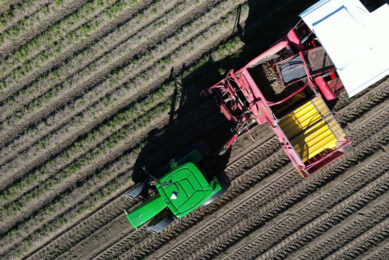Plant sensors could act as an early warning system for farmers

Sensors that detect plant signaling molecules can reveal when crops are experiencing too much light or heat, or attack from insects or microbes.
Using a pair of sensors made from carbon nanotubes, researchers from MIT and the Singapore-MIT Alliance for Research and Technology (SMART) have discovered signals that reveal when plans are experiencing stresses such as heat, light, or attack from insects or bacteria.
The sensors detect two signaling molecules that plants use to coordinate their response to stress: hydrogen peroxide and salicylic acid (a molecule similar to aspirin). The researchers found that plants produce these molecules at different timepoints for each type of stress, creating distinctive patterns that could serve as an early warning system.
Potential threats
Farmers could use these sensors to monitor potential threats to their crops, allowing them to intervene before the crops are lost, the researchers say.
“What we found is that these two sensors together can tell the user exactly what kind of stress the plant is undergoing. Inside the plant, in real time, you get chemical changes that rise and fall, and each one serves as a fingerprint of a different stress,” says Michael Strano, the Carbon P. Dubbs Professor of Chemical Engineering at MIT and one of the senior authors of the study. Strano is also the co-lead principal investigator at the Disruptive and Sustainable Technologies for Agricultural Precision research group at SMART.
Sarojam Rajani, a senior principal investigator at the Temasek Life Sciences Laboratory in Singapore, is also a senior author of the paper, which appears in Nature Communications. The paper’s lead authors are Mervin Chun-Yi Ang, associate scientific director at SMART and Jolly Madathiparambil Saju, a research officer at Temasek Life Sciences Laboratory.
Sensing stress
Plants respond to different kinds of stress in different ways. In 2020, Strano’s lab developed a sensor that can detect hydrogen peroxide, which plant cells use as a distress signal when they are under attack from insects or encounter other stresses such as bacterial infection or too much light.
These sensors consist of tiny carbon nanotubes wrapped in polymers. By changing the three-dimensional structure of the polymers, the sensors can be tailored to detect different molecules, giving off a fluorescent signal when the target is present. For the new study, the researchers used this approach to develop a sensor that can detect salicylic acid, a molecule that is involved in regulating many aspects of plant growth, development, and response to stress.
To embed the nanosensors into plants, the researchers dissolve them in a solution, which is then applied to the underside of a plant leaf. The sensors can enter leaves through pores called stomata and take up residence in the mesophyll — the layer where most photosynthesis takes place. When a sensor is activated, the signal can be easily detecting using an infrared camera.
Join 17,000+ subscribers
Subscribe to our newsletter to stay updated about all the need-to-know content in the agricultural sector, two times a week.



